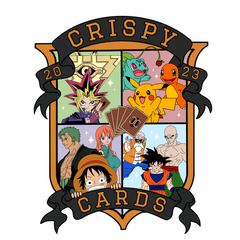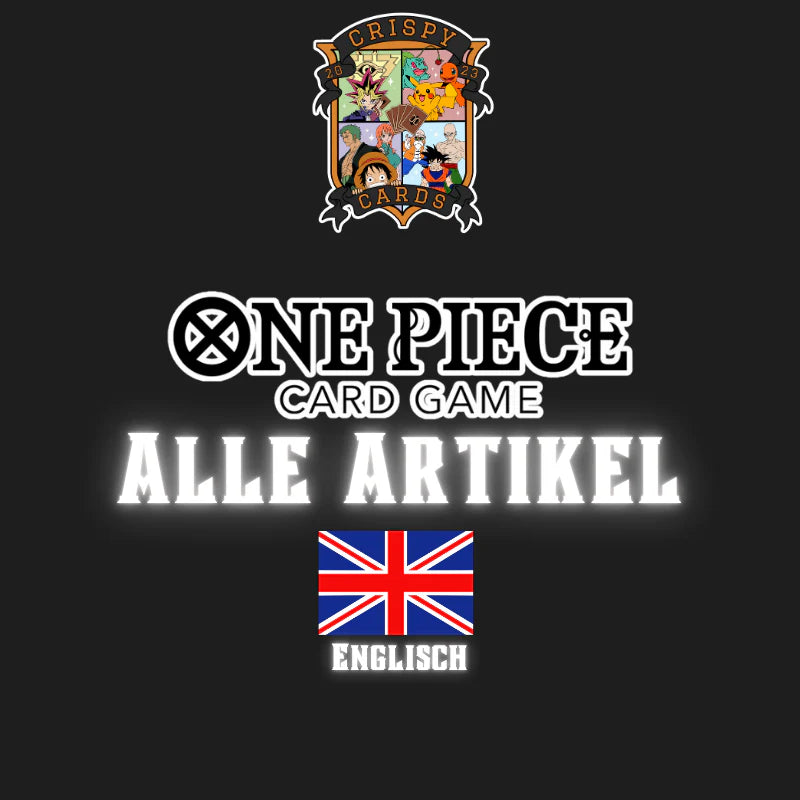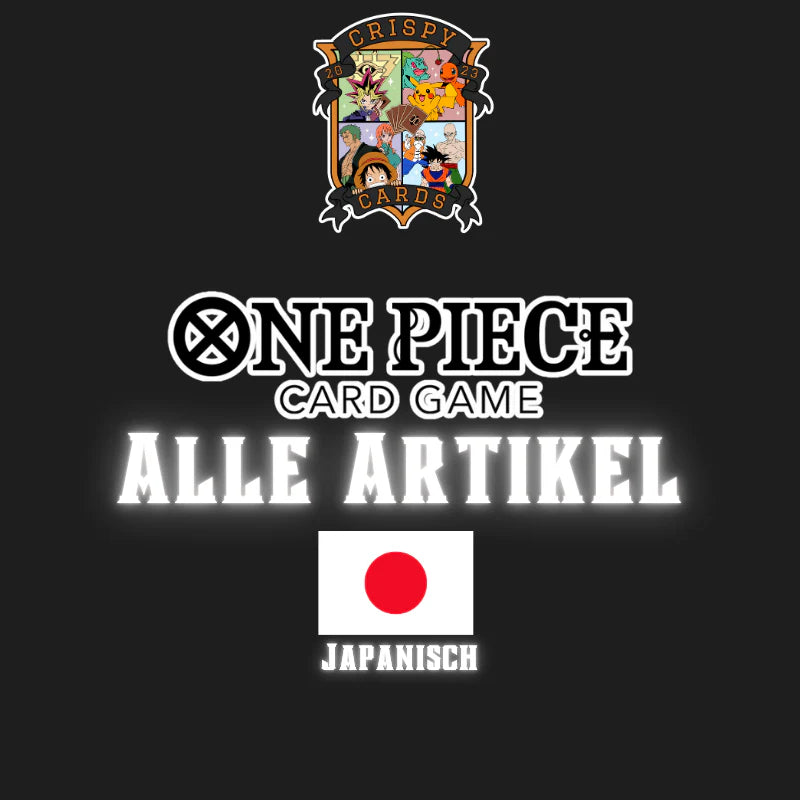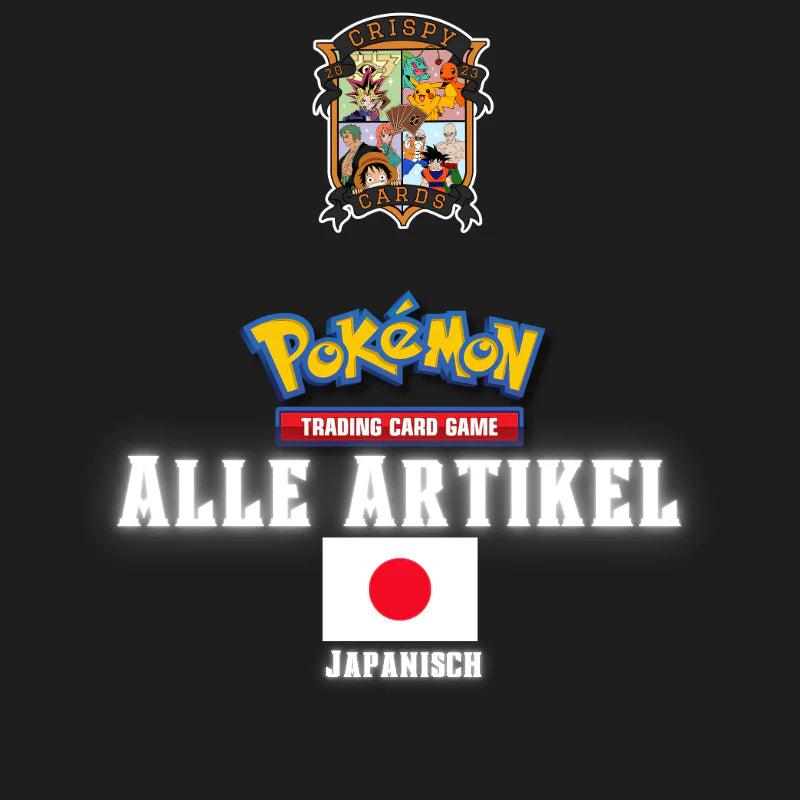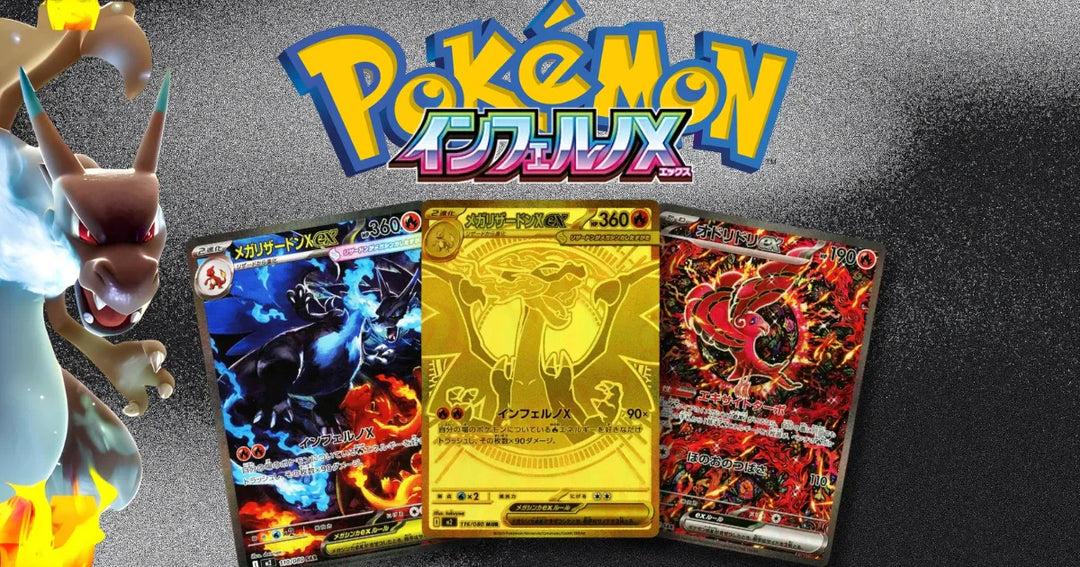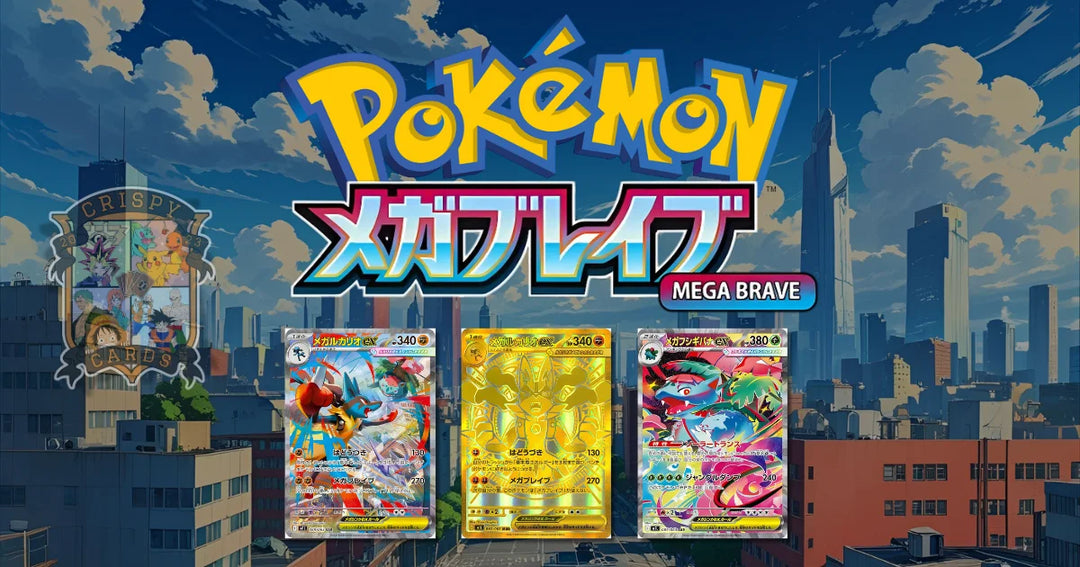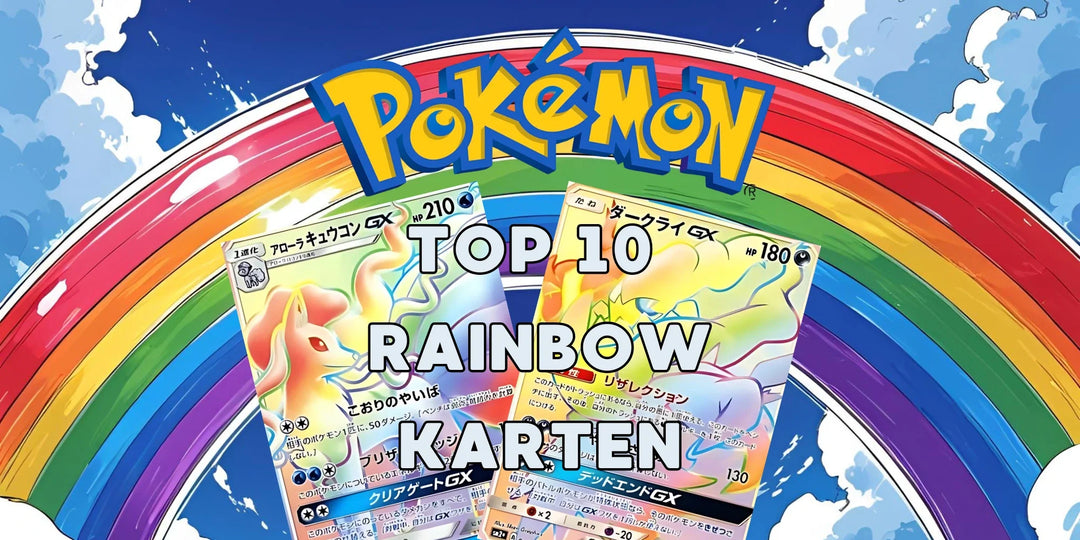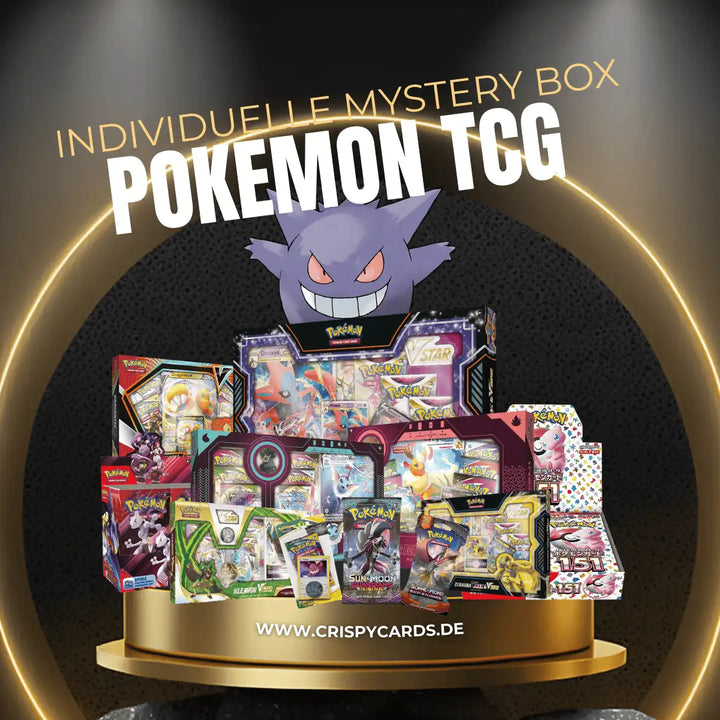Hello to all CrispyCards blog readers for the blog post about grading Pokemon cards correctly.
In this post, we'd like to introduce you to a topic that's constantly being discussed in the collecting and TCG community— card grading ! If you're thinking about having your Pokémon cards graded , you'll find all the important information here! This post doesn't just apply to the Pokémon TCG, of course, but applies to all types of trading cards.
Whether you're an experienced collector or a newcomer to the world of Pokémon collectibles, our tips will help you master the art of safe shipping . So grab your cards, prepare your products, and let's dive into the world of safe Pokémon shipping together!
What exactly is map grading?
Card grading is essentially a fairly simple process, but it can become more complex the more involved you become. To put it simply, it's the evaluation of the condition of trading cards . This condition is determined based on several factors and documented on a label issued by the respective grading company.
This label is stored and sealed with the card in a hard plastic sleeve , also known as a slab . The result is a card securely sleeved and containing a label with information. Up to this point, it should be simple, as that's essentially what happens to the card. However, things become more complex when it comes to the actual grading process that leads to the final grade and the impact this has on the card. But why should you have your Pokémon cards graded in the first place?
There are several reasons why you should have your cards graded:
- Preservation of value:
- Grading officially documents the card's condition, helping to increase its long-term value. This is especially beneficial for rare or valuable cards. Graded cards are often more highly valued by collectors and investors and can therefore command a higher market value. The official grading provides a clear assessment of the condition and allows collectors to better understand and appreciate the value of their cards.
- Addressing:
- The card is securely stored in a hard plastic sleeve to protect it from damage, deterioration, or loss. This sleeve, also known as a slab, provides physical protection for the card and preserves its condition over time. This keeps the card in optimal condition and maintains its collectible value.
- Authenticity:
- Grading not only confirms the authenticity of the card but also protects against counterfeiting. It ensures that the card is authentic and is graded in the condition documented on the grading label. This allows collectors to be confident that they own a genuine, high-quality card.
- Trade and sales:
- Graded cards are more attractive to collectors and buyers because they know the exact condition of the card. This clear assessment facilitates trading and can lead to better sales opportunities. Buyers have a more precise understanding of what they are receiving and can therefore be more confident in their decisions when purchasing or trading cards. Grading builds trust among collectors and facilitates the exchange of cards within the community.
- Collector's pride:
- List Items: Graded cards are often a source of pride for collectors and can hold special significance in their own collection. Official grading and safe storage in a hard plastic sleeve give collectors a sense of security and pride in owning high-quality, well-preserved cards. These cards are often considered treasures and can hold a special place in any enthusiast's collection.
Ultimately, grading provides a formal and standardized way to evaluate the condition of a trading card, and it gives collectors and dealers a clear idea of the value and quality of their cards.
Pokémon cards in a binder
Before submitting your cards for grading, it's important to learn about their potential value based on their condition and inspect the card for any damage , wear , or flaws . It takes some practice to accurately assess a card so you can get a realistic idea of what the final result might be. A thorough understanding of the card's condition allows collectors to have realistic expectations and prepare for the outcome of the grading process.
The grading process is a careful and precise evaluation process in which a trading card is examined by experts for its condition. Here's a rough overview of the grading process:
submission
The grading process begins with the owner submitting the card to a specialized grading company. This step is the first and most important step to initiate the process and subject the card to a professional evaluation.
Test
After the map is submitted to the grading company, an experienced expert will thoroughly examine the map for damage, wear, misprints, and other defects. They will closely examine various aspects such as corners, edges, surface, and centering. This thorough examination is crucial to determining the exact condition of the map and providing a precise assessment.
Evaluation
The card is graded using a standardized grading system, typically ranging from "Poor" (poor) to "Gem Mint" (excellent condition). This system allows for a precise and consistent assessment of the card's condition and gives collectors a clear idea of the value and quality of their cards. Depending on the damage and wear found, the card is classified into one of the categories accordingly, which determines the card's grade.
sealing
After grading, the card is sealed in a secure hard plastic sleeve, also known as a slab. This sleeve protects the card from external influences and permanently preserves its condition. The grading label, which contains the grade and other information about the card, is affixed to the sleeve. This not only protects the card's condition, but also preserves and verifies the official grade. This gives collectors and buyers additional security and confidence in the card's authenticity and condition.
Return
After the card has been graded and sealed in its secure hard plastic sleeve, it is returned to the owner. This sealed card is now optimally protected and can be safely stored in the collection. The sealing not only ensures protection from external influences but also preserves the integrity of the grade. The owner receives an authentic and officially graded card, which provides clear insight into its condition and can enhance the value of the collection.
What important features should you look for?
Once your cards reach the grading service , they are documented and processed in the order they were submitted . The staff removes the cards from their protective sleeves and carefully inspects their condition to determine their rating. Four key factors play a role, which may vary depending on the company:
Centering

One of the crucial factors in grading trading cards is centering. This checks how well the image is centered on the card and how even the border around the image is. Perfect centering is often a sign of a high-quality card and can positively influence the grading.
Edges

The edges of a map are another essential factor in grading. Here, the condition of the edges is checked to ensure they are sharp and undamaged. Worn or chipped edges can negatively affect the grading, while sharp, undamaged edges are a sign of a well-preserved map.
Corners

The corners of a card are another important aspect of grading. Here, the condition of the corners is checked to ensure they are sharp and undamaged. Worn or chipped corners can negatively impact the grading, while sharp, undamaged corners are a sign of a well-preserved card.
Surface

The surface of a card is another important factor in grading. The condition of the card's front is checked to ensure it is free of scratches, stains, or other damage. A smooth and flawless surface contributes positively to the grade, while irregularities or soiling can negatively impact the grade.
These four factors (centering, corners, edges, surface) are each rated for the front and back of the card and are referred to as subgrades . PSA does not specify these subgrades; instead, only the final overall grade of the card is given. BGS, on the other hand, specifies the four subgrades for both sides of the card in addition to the overall grade (corresponding subgrade (X/Y); X/Y for front and back). There are also grading companies that specify all factors , including both sides, by assigning corresponding subgrades for the front and back of the card.
There are indeed exceptions that can affect grading. These include rare printing errors , variations , or special cards that may receive a special evaluation. Signatures, stamps, or other special features on the card can also lead to exceptions and affect the grading. In such cases, the card is often individually graded to properly capture its unique value. It is important to document these special features upon submission so they can be taken into account during grading.
Miscut

A "miscut" refers to a trading card that has suffered a cutting error. This means the card has been cut unevenly or incorrectly, resulting in an unusual or undesirable card shape. Such a miscut error can sometimes increase the value of the card, as collectors often value these defective cards as rare and unique collectibles. However, the exact impact on value depends on the type and degree of the miscut.
Misprint

"Misprint" refers to a printing error on a trading card. This can include various types of defects, such as ink stains, misprinted text or images, missing inks, or inaccurate cuts. Misprints make a card unique and can be highly sought after by collectors, especially rare cards. The value of a misprint can vary greatly and often depends on the type of error, the rarity of the card, and collector demand. Some collectors value misprints as curious and sought-after items in their collections.
Where can you get your Pokemon cards graded?
There are various grading companies where you can have your Pokémon cards graded . Some of the most well-known and trusted Pokémon card grading companies are:
PSA (Professional Sports Authenticator)
PSA (Professional Sports Authenticator) is a reputable company specializing in the authentication, grading, and sealing of trading cards. Founded in 1991, the company has since earned an excellent reputation in the collecting community. PSA offers grading services for a wide variety of trading cards, including sports cards, Pokémon cards, Yu-Gi-Oh! cards, Magic: The Gathering cards, and more. They not only evaluate the condition of the cards but also verify their authenticity and other special characteristics.
PSA 's grading process is based on a standardized assessment of factors such as centering, corners, edges, and surface. Cards receive an overall rating on a scale of 1 to 10. PSA also offers an online tracking service that allows customers to track the status of their submitted cards throughout the grading process. Exact prices and processing times vary depending on the type of card and the selected service level. This information is available on the official PSA website.
It is essential to carefully review the specific submission guidelines on the PSA website before submitting cards for evaluation to ensure they meet the required criteria.
BGS (Beckett Grading Services)
BGS (Beckett Grading Services) is a renowned company specializing in trading card grading. Founded in 1999 by James Beckett, it has since grown into a respected grading firm. BGS offers grading services for various types of trading cards, including sports cards, Pokémon cards, Yu-Gi-Oh! cards, Magic: The Gathering cards, and more. Similar to PSA, BGS uses a standardized grading process in which cards are evaluated for various factors such as centering, corners, edges, and surface. The overall grade is given on a scale of 1 to 10.
BGS seals the graded cards in secure hard plastic slabs to preserve their integrity and protect them from external influences. Unlike PSA, BGS also provides specific subgrades for various aspects of the card in addition to the overall grade, providing collectors with more detailed information about the card's condition. BGS also offers an online tracking service that allows customers to check the status of their submitted cards during the grading process.
Costs and processing times vary depending on the type of card and the selected service level. Current information is available on the official BGS website. It is advisable to check the detailed submission guidelines on the BGS website to ensure that cards meet the required standards before submitting them for evaluation.
CGC (Certified Guaranty Company)
CGC (Certified Guaranty Company) is a respected grading company specializing in the evaluation, authentication, and sealing of comics, magazines, concert posters, and other collectibles. CGC's services extend to a variety of items, including comics, magazines, concert posters, periodicals, and other collectibles. CGC experts not only evaluate the condition of the items but also verify their authenticity and other special characteristics.
CGC uses a standardized grading process in which items are evaluated based on various criteria such as condition, corners, binding, and color quality. The overall grade is given on a scale of 1 to 10. After grading, the items are securely sealed in hard plastic slabs to preserve their integrity and protect them from external influences. CGC offers a convenient online tracking service that allows customers to track the status of their submitted items throughout the grading process. Each graded item is provided with a personalized certificate confirming its grade and authenticity.
CGC also considers variants and special editions when grading, which is especially relevant for collectors. Costs and processing times vary depending on the type of item and the chosen service level. Current information is available on the official CGC website.
CGC was founded in 2000 and has since earned an excellent reputation in the collecting community. Before submitting items for grading, it is advisable to review the detailed submission guidelines on the CGC website to ensure that the items meet the required standards.
GMA (Gem Mint Authentication)
GMA (Gem Mint Authentication) is a grading company specializing in the evaluation and authentication of trading cards. Their services include various types of trading cards, such as sports cards, Pokémon cards, Yu-Gi-Oh! cards, and Magic: The Gathering cards. GMA not only evaluates the condition of the cards but also verifies their authenticity and other special characteristics.
Similar to other grading firms, GMA uses a standardized process to grade cards based on factors such as centering, corners, edges, and surface finish. The overall grade is given on a scale of 1 to 10. The graded cards are securely sealed in hard plastic slabs to preserve their integrity and protect them from external influences. Each graded card is provided with an individual certificate confirming the grade and authenticity.
GMA offers an online tracking service that allows customers to track the status of their submitted cards throughout the grading process. Prices and processing times vary depending on the type of card and the service level selected. It is recommended to review the detailed submission guidelines on the GMA website before submitting cards to ensure they meet the required standards. It should be noted that GMA's reputation and name recognition may not be as widespread as established grading firms such as PSA and BGS.
Middlemen – A straightforward way to grade cards?
It's important to do your research before selecting a grading company to ensure they offer the service and quality you desire. Each company has its own fees, processing times, and grading criteria, so it's advisable to check their websites and learn about their services before submitting your cards. For collectors outside the US, the grading system can be challenging, as international shipping, customs issues, and the associated time and expense present additional hurdles. Properly declaring packages and contents, as well as dealing with various insurance policies and processing times, can be complicated.
This is where intermediaries come into play, often maintaining close partnerships with grading companies. These intermediaries take on the extra work and facilitate the smooth submission of cards for a small fee. Collectors can pay the fees, ship their cards within their own country, and then wait for their return. The intermediary handles the entire process, keeping customers updated on the status of the cards, and collectors don't have to worry about anything else.
Crispycards will soon offer a simple, cost-effective, and fully secured solution for submitting cards to PSA. This makes the card grading process as easy as possible. More information will be published in a separate post.
European and German grading companies – aspects to consider
Although there are now several established companies in Europe and Germany that have either been operating for many years or are slowly making a name for themselves, they are only recommended with reservations , as they primarily serve their own, small market. In Germany , Absolute Objectice Grading (AOG) has made a name for itself, relying on AI-assisted assessment. However, even here, there are limitations and errors that can occur and are reflected in the assessment.
A major problem with German and European grading companies is the price-performance ratio. The costs are generally only slightly lower or even the same as those of American companies, but you get less for your money overall. The decisive factor, namely value added, is often missing from European and German companies. You often see phrases like "Company X with Grade Y is like PSA 10" in advertisements for graded maps, but these statements are simply false. No grading company and its ratings can be directly compared 1:1 with another, and there is no guarantee that a good rating from one company will be transferable to another. This is primarily due to the different grading processes and focuses of the companies.
Of course, there's nothing wrong with choosing a German company if you want to protect your card, don't want to have your card graded abroad, or if you particularly like the label of a particular company. However, you should be aware that their services aren't directly comparable to those of American grading services, and you should carefully consider what you're spending your money on.
We hope this post , "How to Grad Pokemon Cards Correctly," has given you a comprehensive insight into the topic of grading! If you plan to have your Pokémon cards graded, please let us know in the comments which company you would like to use. We look forward to hearing your opinions and experiences!

